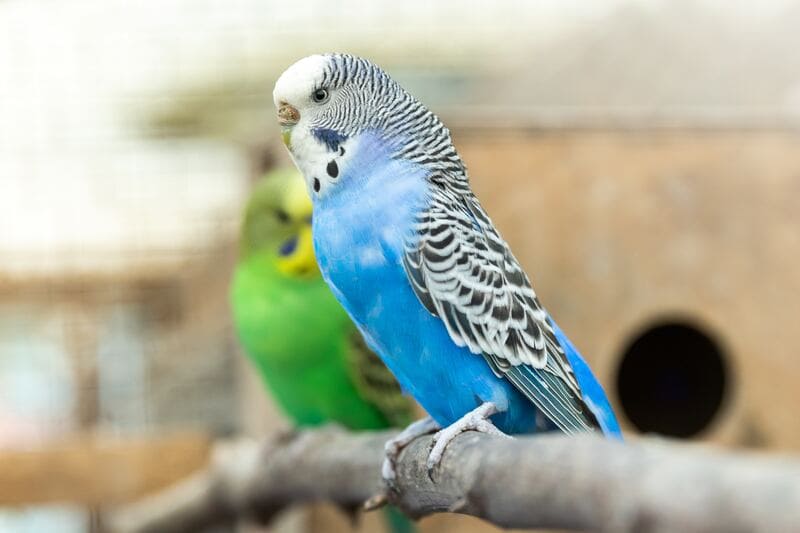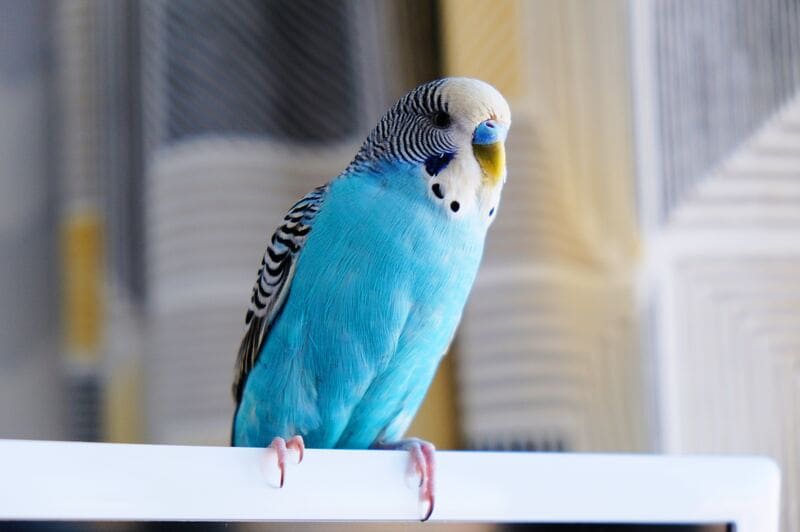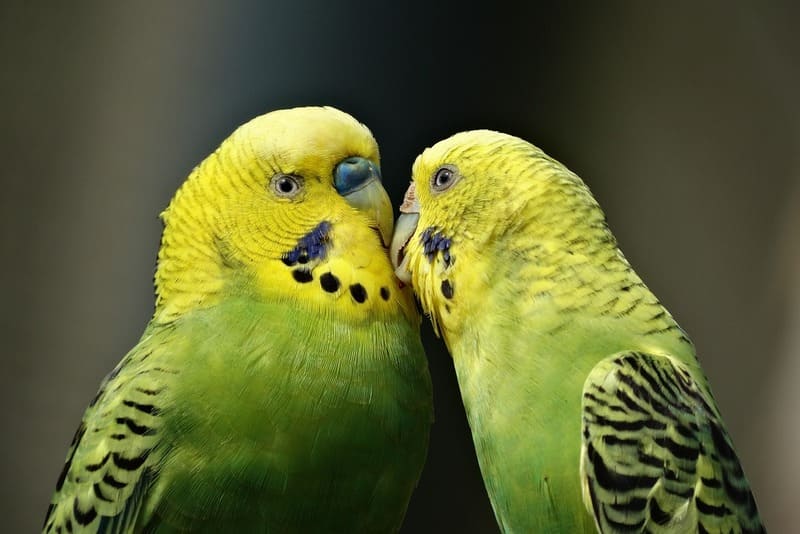Parakeets are among the most popular pet birds due to their small size, vibrant plumage, and charming personalities. One common question that parakeet owners often ponder is whether these intelligent little birds can actually recognize and respond to their names. In this comprehensive exploration, we will delve into the world of parakeet communication and cognitive abilities, shedding light on the extent to which they can understand and respond to their names.

The World of Parakeets
Before we dive into the topic of whether parakeets can recognize their names, let’s start by understanding these delightful birds a bit better.
1. Species and Origin: Parakeets, scientifically known as Melopsittacus undulatus, are native to Australia. They are part of the parrot family and belong to the order Psittaciformes. Parakeets are characterized by their small size, long tail feathers, and a distinctive scalloped pattern on their plumage.
2. Appearance: Parakeets exhibit a wide range of color variations, with shades of blue, green, yellow, and white being the most common. Their charming and vibrant plumage, combined with their playful and inquisitive nature, makes them popular pets.
3. Social Creatures: Parakeets are highly social birds that naturally form flocks in the wild. They thrive on social interaction and often establish strong bonds with their human caregivers.
4. Intelligence: Despite their small size, parakeets are surprisingly intelligent birds. They have an aptitude for learning and problem-solving, making them engaging and entertaining companions.
5. Vocal Abilities: Parakeets are known for their vocalizations, which include chirps, whistles, and even the ability to mimic human speech. While they may not be as talkative as some other parrot species, they are excellent mimics.
6. Lifespan: With proper care, parakeets can have a relatively long lifespan, often ranging from 7 to 15 years or more in captivity.
Parakeet Communication
To understand whether parakeets can recognize their names, it’s essential to first explore their communication abilities and how they use sounds and vocalizations to interact with their environment and those around them.
1. Chirping and Singing: Parakeets are naturally vocal creatures. They use chirping and singing as a way to communicate with other parakeets, express their emotions, and establish their presence within a flock. This vocal activity is a significant aspect of their daily life.
2. Mimicry: One of the most remarkable aspects of parakeet vocalizations is their ability to mimic sounds, including human speech. While they may not have the extensive vocabulary of larger parrot species, they can learn and mimic words, phrases, and a variety of sounds.
3. Calls and Alarm Signals: Parakeets use different types of calls to convey information. They have contact calls to maintain communication with flock members, feeding calls to signal the availability of food, and alarm calls to warn of potential dangers.
4. Bonding Through Sound: In a domestic setting, parakeets often form strong bonds with their human caregivers. They use vocalizations as a means to express affection, establish a sense of belonging, and communicate their needs.

Cognitive Abilities of Parakeets
Parakeets may be small in size, but their cognitive abilities are impressive. Understanding their intelligence is crucial in evaluating their capacity to recognize and respond to their names.
1. Problem-Solving Skills: Parakeets have shown a remarkable ability to solve simple puzzles and learn how to manipulate objects to achieve a goal. They can figure out how to open doors, retrieve objects, and navigate through mazes.
2. Learning by Observation: Parakeets are excellent at learning by observing their surroundings and the actions of others. They can pick up new behaviors by watching their human caregivers and other birds.
3. Memory: Parakeets have a good memory and can remember past experiences and routines. This memory enables them to recognize familiar people, places, and objects.
4. Communication with Humans: Parakeets have an affinity for bonding with their human caregivers and can develop a repertoire of specific sounds and behaviors to communicate with them effectively.
5. Emotional Intelligence: These small parrots are highly attuned to the emotions of those around them. They can pick up on the mood of their human caregivers and respond with comforting vocalizations or actions.
Can Parakeets Recognize Their Names?
The ability of parakeets to recognize their names is a topic of interest and curiosity for many bird owners. While parakeets may not understand their names in the same way humans do, they can learn to associate certain sounds or vocalizations with specific individuals or events.
1. Association and Recognition: Parakeets can recognize and associate certain sounds with specific people or activities. When you repeatedly use a particular name or word in the presence of your parakeet, they may come to associate that sound with your presence. Over time, they can learn to respond to that sound.
2. Repetition and Consistency: Repetition and consistency are key when teaching a parakeet to recognize their name. When you consistently use their name while interacting with them, feeding them, or offering treats, they are more likely to associate it with positive experiences.
3. Response to Familiar Sounds: Parakeets often display recognition by responding to familiar sounds. When they hear their name, they may react by looking in the direction of the sound, chirping, or flying over to be with the person calling them.
4. Limitations: It’s important to note that parakeets do not understand language in the same way humans do. They do not comprehend the meaning of words or names as we do. Instead, their recognition is based on the sound and the context in which it is used.
5. Individual Variability: Just like human individuals, parakeets vary in their ability to learn and recognize specific sounds. Some parakeets may quickly learn to respond to their names, while others may not be as responsive.
Teaching Your Parakeet to Recognize Their Name
If you’re interested in teaching your parakeet to recognize their name, here are some steps you can follow:
1. Choose a Simple Name: Select a short and simple name for your parakeet. Names with one or two syllables are easier for them to learn and recognize.
2. Consistent Use: Use your parakeet’s name consistently during interactions. Call their name when you approach their cage, offer treats, or engage in play.
3. Positive Reinforcement: Pair the use of their name with positive experiences. Offer treats, head scratches, or praise when you call their name. This creates a positive association with the sound.
4. Repetition: Repetition is key to learning. Continue using their name regularly, and be patient as they become familiar with it.
5. Associate with Visual Cues: Parakeets often respond to visual cues as well. You can reinforce the recognition of their name by using it when you are visible to them, such as when you’re feeding or interacting with them.
6. Avoid Negative Associations: Ensure that their name is always associated with positive experiences. Avoid using their name when scolding or reprimanding them to prevent any negative associations.
7. Be Patient: Learning and recognition take time. Some parakeets may pick up on their name quickly, while others may require more time and repetition.

Signs of Name Recognition
As your parakeet becomes more familiar with their name, you may notice signs of recognition. These signs can include:
1. Attention: Your parakeet may turn their head or direct their attention toward you when they hear their name.
2. Approach: They may fly over to you or approach you when you call their name.
3. Chirping or Vocalizations: Your parakeet may respond with vocalizations or chirping when they hear their name, signaling their acknowledgment.
4. Positive Interaction: They may display signs of happiness and eagerness to interact with you when they hear their name.
5. Learning of Commands: Parakeets that have learned to recognize their name may also respond to specific commands or requests, such as stepping onto your finger when called.
The Limits of Name Recognition
While parakeets can learn to recognize their names and respond to them, it’s important to understand the limits of this recognition. Parakeets do not understand language in the same way humans do. Their recognition is based on the association between the sound of their name and positive experiences, attention, or specific individuals.
Additionally, individual variability plays a significant role. Some parakeets may be more responsive to their names, while others may not show strong recognition. It’s essential to respect the unique personalities and capabilities of your individual bird.
The Importance of Positive Interaction
Teaching your parakeet to recognize their name is just one aspect of positive interaction and bonding with your feathered friend. Parakeets thrive on social interaction, mental stimulation, and physical activity. Regular and engaging interaction with your parakeet, along with providing a stimulating environment, is essential for their well-being and happiness.
Conclusion
Parakeets are intelligent and sociable birds that can learn to recognize their names and respond to them. While they may not understand the meaning of words as humans do, they can associate the sound of their name with positive experiences and attention. Teaching your parakeet to recognize their name can be a rewarding and enjoyable aspect of your relationship with these charming birds.
As you engage with your parakeet, remember the importance of patience, repetition, and positive reinforcement. Each parakeet is unique, and their ability to recognize their name may vary. Ultimately, the joy of hearing your parakeet respond to their name and the bond you share with your feathered companion are the most rewarding aspects of the process.
